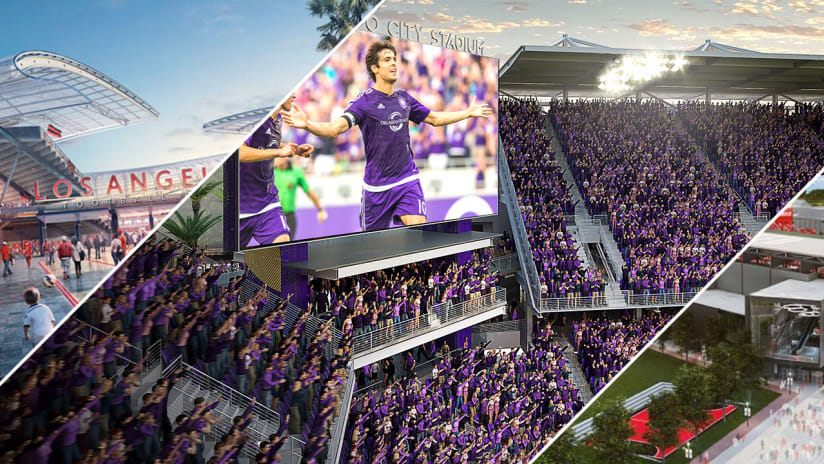For a new team looking to join MLS, a “soccer-specific” stadium is a crucial piece of the puzzle. While not a strict requirement, MLS does want teams to have their own place to play and a soccer-specific stadium is especially desirable. But why?
There are many reasons why MLS has pushed for the soccer-specific stadium. It has brought tons of investment into the league and has given fans of this sport a place to call their own. Stadiums built for soccer have created a better gameday environment than playing in a bowl or an NFL stadium. But most importantly, soccer-specific stadiums have grown interest in the community.
The first soccer-specific stadium emerged in Columbus in 1999. Soon other teams followed, including Los Angeles and Dallas. But they were looking to keep costs low, which resulted in an overall lack of investment in the facility. Stadiums weren’t always in the best location or built with the highest levels of technology. It was a risky gamble.
But as the league has begun to grow, so have the stadiums. Orlando City’s soccer-specific stadium is nearing completion and will stand as an example for clubs in the future. It is located in the heart of downtown Orlando, is privately funded, and is built to maximize the gameday experience. Los Angeles FC, Minnesota United, and D.C. United are also in the process of building their own stadiums. David Beckham is still hunting for land for his own stadium in Miami.
There appear to be three major waves of soccer-specific stadiums. The First Wave started in the late 90s and the early 2000s. The Second wave lasted from the mid-2000s to 2015. And the Third Wave of stadiums is those yet to be open.
The First Wave
The First Wave of soccer-specific stadiums started in 1999 with the opening of MAPFRE stadium in Columbus. Soccer-specific stadiums seemed like the answer to a league seeking to control their own revenue and create a better environment for their fans. Soon other teams followed Columbus’ lead, including the L.A Galaxy and FC Dallas. But these stadiums were built with the thought of keeping costs low, and with the league in its early stages, support was more difficult to come by.
The Second Wave
The next wave of soccer-specific stadiums started opening in the mid-2000s and lasted up until 2015. These stadiums were being built faster and to a higher quality than their predecessors, especially as interests in the community grew. Most soccer stadiums were built in this era, including the stadiums in Houston, Philadelphia, New York (Red Bulls), Toronto, Montreal, Colorado, Salt Lake City, Kansas City, San Jose, and Chicago. Many of these stadiums were marked by unique features such as canopies to keep the noise in and unique sound-systems that responded to the enclosure. Teams started to encourage fan experiences, where the fun starts as soon as the fans meetup with their friends and head to the match.
The Third Wave
With MLS growing more rapidly than ever, the new soccer-specific stadiums promise to give even greater experiences. Both LAFC and Orlando City SC are entirely privately funded, an accomplishment which shows how much support there is in the community for these two clubs. Along with LAFC and Orlando City, clubs like D.C. United and Minnesota United are seeking to push the boundaries in stadium design. They’ll have specially designed supporters’ sections, along with fresh amenities and design. Orlando City President Phil Rawlins said that the club traveled all around the country and all around the world to see what would make the new Orlando City stadium the best home possible for their fans.
Encouraging soccer-specific stadiums doesn’t just give financial benefits to the team or the league. It helps grow the sport. With soccer-specific stadiums, fans have a home that fits their needs. But these stadiums also encourage new fans to come and see what all the hype is about. Soccer-specific stadiums aren’t just a luxury-- they are an integral part to the growth of MLS.





